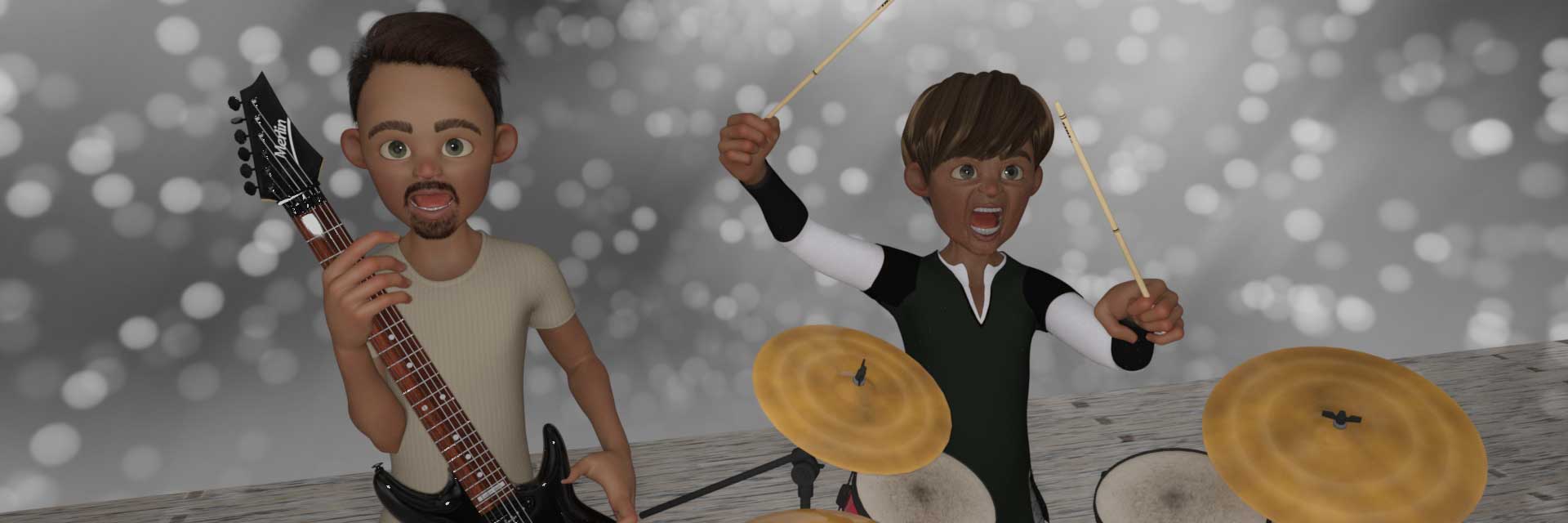Music - The Story From The Very Earliest Days
Music has been a vital part of human existence from the beginning. From the moment we learned how to speak, we also learned how to sing. From the first cave dwellers who drummed out their hunting songs to the ancient civilizations who sang hymns in praise of their gods, music has always played a central role in shaping our cultures and traditions.
Whether it is the stirring rhythms of tribal beats or the soaring lilt of classical melodies, music has been an inherent element throughout history. It is also one of the most rapidly evolving genres. In this website, you will learn about how music has evolved over time and how it continues to influence our culture today.
The Evolution of Music
All music is bound by some kind of cultural framework, and whilst that can often seem to limit the genre, it can also be a way to understand what makes music unique. Through the history of music, we can trace how different styles have reflected the societies that created them, whether that's the role of religion in Medieval music or the African-American struggle for equality in the 20th century.
The evolution of music is driven by the society that creates it and the tools available to musicians. As people inhabit new places and are exposed to new ideas, the sounds evolve to reflect that. So let's look at how music has changed over time.
Prehistoric Music
Prehistoric music is an interesting phenomenon because, as the name suggests, we have little to no information about it. We can only infer what these ancient peoples might have sounded like by looking at the tools they used, when humans began experimenting with sound and rhythm. They did this by hitting, scraping, or rubbing different objects together.
This primitive form of music is called “imitative music.” It was the earliest form of music, and it is believed to have been common in many parts of the world. Imitative music is characterized by rhythm and melody, but it is simpler than modern music and does not include harmony.
Prehistoric drumming, stimulated by the use of hand and foot, was one of the earliest musical instruments. Other early musical instruments included rattles, whistles, and horns; many prehistoric peoples also used nature to make music. They possibly sang, hummed, or whistled while swinging pearl-shell necklaces or seashells.
Ancient Music
Ancient music was fairly similar to prehistoric music, with a few exceptions. These early cultures also used percussive instruments like the tambourine and the castanets. They also occasionally used wind instruments like the flute, and string instruments like the lyre and the harp.
Largely, music was used in early civilizations to praise the gods. Oracles and prophets were often accompanied by music, and music was also used to heal the sick and comfort the dying.
Evidence suggests that the ancient civilizations of India, China, and the Middle East were the first to develop a more sophisticated system of music. Chinese scholars created the first known written notation system for music around the 6th century B.C. These early musical compositions were inscribed on pieces of bamboo.
Ancient Indian music was also evolving during this period. It was common for people in India to use different instruments and make music as part of religious ceremonies or social events. A typical ancient Indian orchestra might include a stringed instrument called a vina, a trumpet-like instrument called a horn, a drum called a mridanga, cymbals called kanchanku, and a gong or bell called a nadaswaram.
Greek and Roman Music
Greek and Roman music was heavily influenced by their culture. There are some pieces that are largely inspired by their mythology.There are also some pieces that are meant to be more functional and soothing, such as the music of the bagpipe.
Music also played a key role in Roman society. They had a thriving music scene, and it was a regular event for people to go to the Colosseum to watch people perform. However, Greek and Roman music was very different from what we know now. For example, the Greek lyre is an instrument that hardly resembles the modern guitar, and the Romans used instruments like the tibia, which was similar to the trumpet.
The ancient Greeks produced the first known written compositions that were meant to be artistic as opposed to simply functional. Around 600 B.C.E., a Greek poet named Choerilus wrote the first known artistic song. In the 4th century B.C.E., Greek philosopher Aristotle wrote the first known study of music theory. He described three elements that are essential to music: melody, harmony, and rhythm.
The Romans continued to advance the study of music during their reign (about 50 B.C.E. to 400 C.E.). One Roman scholar named Boethius wrote a treatise on music that is still studied today.
The Dark Ages and the Renaissance
One of the most defining things about Medieval music is the role of religion in it. The Christian Church was a huge part of life, so it only makes sense that it also had a heavy influence on the music and many of the most popular Medieval songs are church hymns. Music during this time was also heavily influenced by the rise of the troubadours, who were wandering musicians and poets.
The Renaissance was a time of renewed interest in the arts, including music. Composers started to break away from the strict, religious compositions of the Medieval period, making way for the first pieces that we might recognize as modern music. Renaissance music was often used to express feelings like love or sadness.
Jazz Age, Rock and Roll, and Beyond
Following the Renaissance, music continued to evolve. Some of the most important developments took place during the early 20th century. During this period, jazz and blues were two major styles of music. Jazz blended elements of European, Asian, and African music with Western sounds such as the trumpet and saxophone. The blues emerged in the rural South of the United States as a style of music sung by poor black farm workers.
During the 1950s, rock and roll emerged as a prominent style of music - this was a blend of African American and Southern culture. It included elements of jazz, gospel, and country and western music. Rock and roll gained widespread popularity in the 1960s, when it became associated with the “counterculture” movement of young people who were protesting against social injustice.
As rock and roll grew in popularity, it also grew in diversity. By the 1960s, there were many different types of rock, including folk, psychedelic, and psychedelic rock.
The Culture Shaping Power of Music Today
Today, the evolution of music is not slowing down. In fact, it is only accelerating as new genres are being created and explored on what seems to be a daily basis. From country to hip hop, and everything in between, musicians continue to explore the boundaries of their craft in order to create new and exciting sounds.
Today, music is more than just a form of entertainment; it is a vital component of our culture. It influences everything from the way we dress to the way we interact with others. In addition, music is also an extremely powerful outlet for emotion and expression.
With its ability to both entertain and influence, music will continue to play an important role in shaping our society and culture for many years to come. It can be used to explore different cultures and create intercultural dialogue. It can be a way to learn more about other cultures and a way to appreciate our own culture in a new way.

